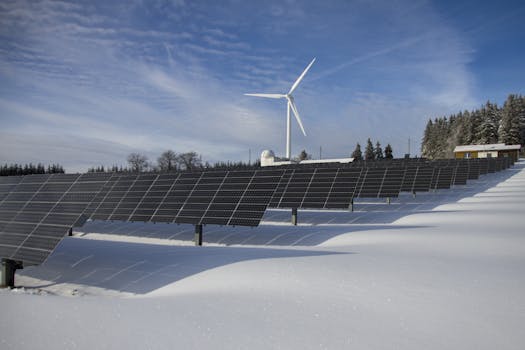Introduction
Renewable energy has been a key focus of global efforts to reduce dependence on fossil fuels and combat climate change. As we approach 2025, significant advancements are expected in this sector. With the growing urgency of addressing environmental concerns, renewable energy sources such as solar, wind, and hydropower are becoming more efficient and accessible. In this article, we will explore the future of renewable energy, the latest trends, and the innovations that will shape the industry in 2025.
The Current State of Renewable Energy
As of 2024, renewable energy sources account for a significant portion of global energy production. Solar power leads the way, with costs falling dramatically over the past decade. Wind energy, both onshore and offshore, has also seen tremendous growth, and hydropower remains one of the most reliable sources of renewable electricity. However, challenges such as energy storage and grid integration still hinder widespread adoption.
Key Trends in Renewable Energy for 2025
- Advancements in Energy Storage Technologies: One of the biggest obstacles to renewable energy is intermittency. Solar and wind power generation depends on weather conditions, and storage is necessary to balance supply and demand. In 2025, energy storage technologies, particularly lithium-ion batteries and solid-state batteries, are expected to make significant strides, making renewable energy more reliable.
- Smart Grids and Energy Management Systems: With the growing adoption of renewable energy, smart grids are becoming more crucial. These grids use digital technology to manage the distribution of electricity, ensuring that energy is used efficiently. In 2025, we expect to see the widespread deployment of smart grids, allowing for real-time monitoring and optimization of energy usage.
- Solar and Wind Power Integration: Solar and wind energy will continue to dominate the renewable energy landscape. However, integrating these energy sources into the grid will require advanced technologies to ensure stability. Hybrid systems, which combine solar and wind energy with energy storage, are expected to become more common in 2025, helping to stabilize the grid.
- Offshore Wind Farms: Offshore wind energy is gaining momentum, especially in regions like Europe and the U.S. By 2025, offshore wind farms are expected to contribute significantly to renewable energy production. These farms are located in areas with stronger, more consistent winds, making them highly efficient.
- Decentralized Energy Systems: The future of renewable energy is also moving toward decentralization. Small-scale, community-based renewable energy systems, such as residential solar panels and local wind turbines, are expected to become more prevalent. This trend allows individuals and communities to generate their own power, reducing dependence on centralized energy providers.
Innovations Driving the Renewable Energy Revolution
The renewable energy sector is experiencing rapid innovation, with new technologies and business models emerging to meet growing demand. Some of the most promising innovations for 2025 include:
- Perovskite Solar Cells: These next-generation solar cells promise to be cheaper and more efficient than traditional silicon-based panels. By 2025, perovskite solar cells are expected to become commercially viable, significantly reducing the cost of solar power.
- Artificial Intelligence in Energy Management: AI is revolutionizing the way energy is managed, from predicting energy demand to optimizing the operation of renewable energy systems. By 2025, AI-powered systems are expected to play a critical role in managing smart grids and energy storage.
- Floating Solar Panels: Floating solar farms, which are placed on bodies of water such as reservoirs and oceans, are expected to expand rapidly. These systems take advantage of available water surfaces, freeing up valuable land space for other uses.
- Green Hydrogen: Hydrogen produced using renewable energy sources, known as green hydrogen, has the potential to revolutionize industries that are difficult to electrify, such as heavy transport and industrial manufacturing. By 2025, the production of green hydrogen is expected to grow substantially, contributing to the decarbonization of several industries.
Conclusion
The future of renewable energy in 2025 is promising, with advancements in energy storage, grid management, and innovative technologies paving the way for a cleaner, more sustainable energy future. As the world continues to embrace renewable energy, it is essential to continue investing in research, policy, and infrastructure to accelerate the transition to a carbon-free world. With the right mix of innovation and investment, renewable energy can play a key role in shaping a sustainable future for generations to come.





